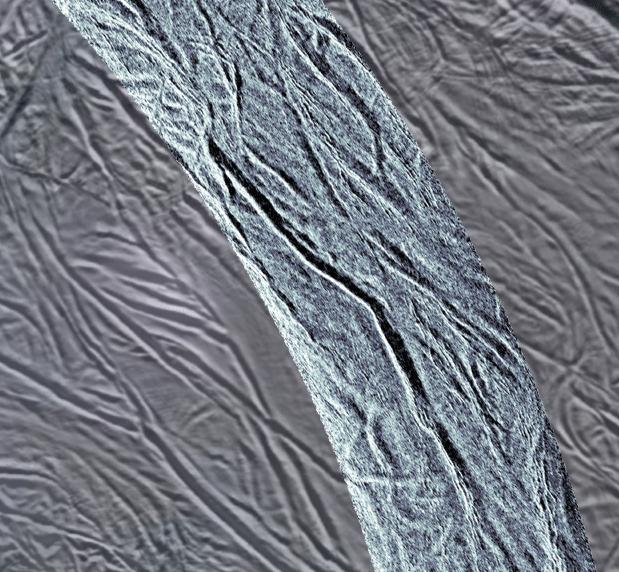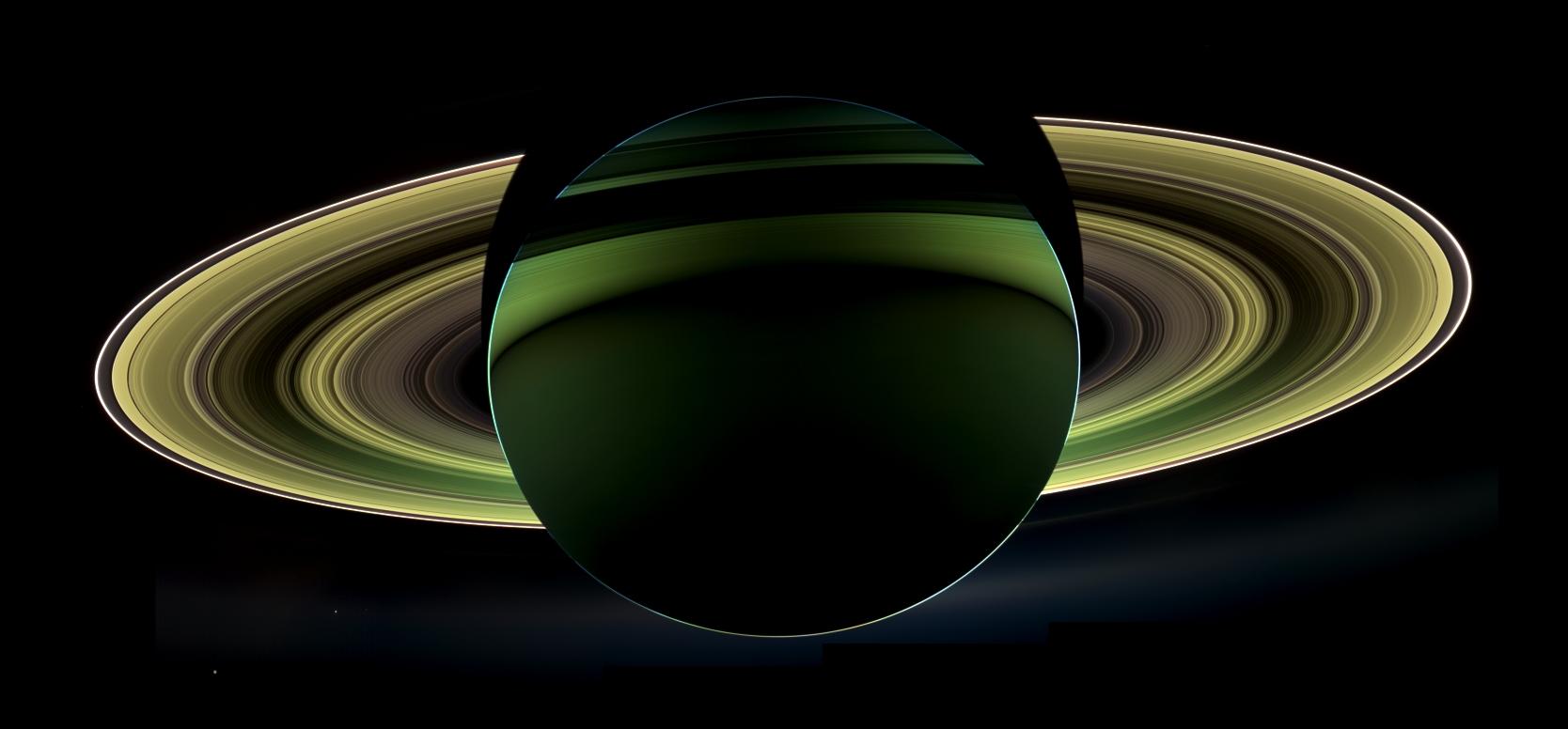2 min read
Saturn's mysterious moon Titan is one of the strangest and most Earthlike places in our solar system.
Larger than Earth's moon and the planet Mercury ... it's the only moon in our solar system that has clouds and a dense atmosphere, mostly nitrogen and methane.
Titan's surface remained shrouded in secrecy below the clouds until July 2004. That's when NASA's Cassini spacecraft arrived at Saturn. With its RADAR and infrared imaging instruments, Cassini was able to lift the veil on Titan.
What scientists saw on Titan's surface astonished them.
Here was a world that looked a lot like home. Its surface is complex and varied, with Earthlike features like riverbeds; vast deserts, covered in dunes; and hydrocarbon lakes. These are the first open bodies of liquid found anywhere in our Solar System, besides Earth.
On Jan. 14, 2005, scientists got an even closer look. The Huygens probe, built by the European Space Agency, parachuted through Titan's atmosphere, taking detailed measurements. The probe survived for several hours on the surface of Titan and returned stunning images.
In spite of their apparent similarities, the differences between Earth and Titan are even more extreme. If you stood on the surface of Titan, the pressure would be like standing at the bottom of a swimming pool. The temperature is minus 289 degrees Fahrenheit (minus 178 degrees Celcius), far colder than Antarctica.
While rocks on Earth are made of silicates, the rocks on Titan are made of water ice.
While Earth's lakes and rivers are filled with liquid water, Titan's flow with liquid methane. In fact, if free oxygen were also present, a single spark would send the entire moon up in flames.
Most scientists agree that life as we know it would be unlikely on this bizarre world. But the study of Titan, the most Earth-like body in the solar system will help us understand our own Earth and even help guide the design of future missions, like Terrestrial Planet Finder, that are designed to search for Earth-like planets beyond our solar system.
The exploration of Titan has only just begun. Over the coming years, Cassini will fly close to the moon several dozen more times, gathering additional data and images, and unlocking more secrets of this strange new world ... an alien Earth in our own solar system.







